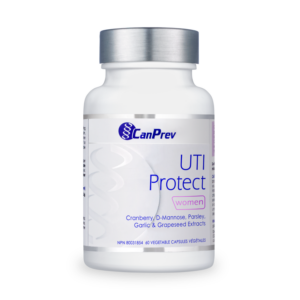Many of us have had those moments when a seemingly simple task like going to the bathroom turns into a source of dread. The sharp discomfort, the constant need to go, and that burning sensation that lingers, leaving you longing for relief. For those who have experienced a urinary tract infection (UTI), this struggle is all too familiar. But here’s the thing, while UTIs can be uncomfortable and frustrating, they don’t have to be a constant in your life. With the right approach, they’re not only treatable but preventable. So, what if you could take back control? Let’s explore what’s really going on and uncover ways to keep your urinary health in balance.
Understanding UTIs
A UTI occurs when unwanted bacteria, most often Escherichia coli (E. coli), sneak into your urinary tract, disrupting the natural flow of things. Imagine your urinary tract as a peaceful river—clear, steady, and balanced. When bacteria invade, these pollutants cloud the water, causing discomfort and irritation. UTIs can affect different parts of this river, from the urethra (urethritis) to the bladder (cystitis) and even the kidneys (pyelonephritis). However, most infections tend to involve the lower urinary tract – the bladder and urethra.
Spotting the symptoms
While the urinary system is designed to keep bacteria out, sometimes our defences fail, which can result in infection. UTIs often cause symptoms related to urination, such as:
- Pain or burning while urinating
- A frequent urge to urinate
- Feeling as though you’re unable to empty your bladder fully
- Blood in the urine
- Strong-smelling urine
- Milky or cloudy urine
Other symptoms may be more general. These may include:
- Chills
- Lower abdominal pressure
- Feeling tired, shaky or weak (especially in older women)
- Fever
- Lower back pain
Why UTIs happen and who’s more susceptible
Women are more prone to UTIs than men, and it often comes down to anatomy. In fact, women are 30 times more likely to develop UTIs than men. The female urethra is shorter than the male urethra, so bacteria can reach the bladder more easily. The female urethra is also closer to the anus, increasing the risk of bacterial transfer or making it easier for bacteria to travel there.
But it’s not just about anatomy.
Other factors, like sexual activity, certain birth control methods, menopause, and underlying conditions such as diabetes, can increase your risk of developing UTIs. These moments of vulnerability are like stormy weather—making it easier for bacteria to disturb your body’s natural balance. Let’s take a closer look:
Sexual activity: Bacteria can be introduced into the urinary tract during intercourse.
Certain types of birth control: Spermicides and diaphragms can disrupt the balance of bacteria.
Menopause: Hormonal changes can lead to a decrease in protective vaginal flora.
Underlying health conditions: Diabetes and immune system disorders can impair immune function and bladder control, making infections more likely.
A urinary tract blockage: A kidney stone for instance, can obstruct the flow of urine, causing urine to pool in the bladder or kidneys. This stagnation creates a breeding ground for bacteria, as the normal flushing action of urine is compromised.
Pregnancy: Hormonal changes can affect the urinary tract as these muscles relax during pregnancy, making it easier for bacteria to enter and cause infections. The growing uterus can also put pressure on the bladder, reducing its ability to fully empty.
Antibiotic use: While antibiotics don’t directly cause UTI’s, they can disrupt the balance of healthy microbes in the body by killing both good and bad bacteria. This imbalance, particularly in the gut and vagina, can create conditions where harmful microbes can thrive, potentially leading to infections. Additionally, long-term antibiotic use can lead to antibiotic resistance, making standard treatments less effective for future infections.
Just as some plants thrive in specific climates, your body has its own unique landscape that can either protect or predispose you to infections. Behavioural factors, such as holding in urine for too long, using irritating personal hygiene products, or not staying properly hydrated, can also increase the risk of both initial and recurring infections.
The relationship between your vaginal microbiome and UTIs
Your vaginal microbiome is a lively community of bacteria, yeast, and other microbes that work together to keep you healthy. Our vaginal flora is constantly changing as we progress through life and experience hormonal changes. When this balance gets disrupted, it can lead to vaginal infections and can make you more prone to UTIs. According to research, here’s how a disrupted microbiome can trigger UTIs:
Microbial hotspot: When your microbiome is out of balance, bacteria like E. coli can flourish. Since your vagina and urethra are so close, these microbes can easily travel from the vagina to the urethra, causing repeated UTIs.
UTI-priming microbes: These are microorganisms that don’t directly cause urinary tract infections (UTIs), but can contribute to an environment that makes it easier for harmful bacteria to cause infections. These microbes can disrupt the natural balance of the vaginal microbiome, weaken the urinary tract’s defences, or create conditions that favour the growth of UTI-causing bacteria.
The role of protective bacteria – Lactobacillus
A healthy vaginal microbiome is populated by a type of probiotic called Lactobacillus which produces various antimicrobial compounds. Research shows that Lactobacillus can not only acidify the vaginal environment, stabilize the vaginal flora and enhance the function of vaginal epithelial cells, but also kill cervical cancer cells. Healthy levels of Lactobacillus bacteria are key to preventing UTIs as they help keep harmful microbes at bay. If these protective bacteria are low, you’re more likely to experience recurrent UTIs.
Consuming foods that promote healthy vaginal bacteria such as yogurt and kimchi can help you maintain a healthy vaginal microbiome. Yes, you read that right—foods like yogurt and kimchi are fantastic for both your gut and vaginal microbiome! Incorporating these foods or a probiotic supplement into your routine can help maintain balanced vaginal bacteria. 
CanPrev’s V-Biotik Vaginal & UTI is formulated with two Lactobacillus strains to help repopulate and maintain your friendly, infection-fighting bacteria. It’s also got an added 200mg of cranberry extract per capsule to help prevent UTIs. Consider it a daily dose of good bacteria, supporting a balanced vaginal environment and offering an extra layer of protection against UTIs.
As your vaginal health is closely linked to your urinary health, incorporating a few lifestyle changes can help to keep things balanced. Try wearing breathable cotton underwear to reduce moisture buildup which can encourage bacterial growth or using non-irritating soaps which can disrupt the natural balance of your vaginal flora.
Simple ways to stay ahead of UTIs
Caring for your urinary health is like tending to a garden—small, consistent actions can keep everything in bloom.
Boost your hydration
Drinking plenty of water helps flush out bacteria from your urinary tract. It might be tempting to avoid fluids to limit trips to the bathroom, especially when experiencing UTI symptoms. But staying hydrated is essential to recovery and prevention.
Adopt effective hygiene habits
Simple habits like wiping front to back after using the bathroom and urinating after sexual intercourse can help keep your body’s ecosystem in harmony. Think of these as gentle ways to prevent potentially harmful bacteria from making its way into your urinary tract.
Choose foods that support urinary health
Foods that support urinary health, such as cranberry juice and a diet rich in probiotics can help to ward off potential threats. Cranberries in particular, contain compounds such as D-Mannose that work to prevent bacteria from sticking to the bladder walls, much like a natural shield protecting your garden from pests.
UTI supplement support
For those prone to recurring UTIs, UTI Protect is here to help. It is a safe and effective option for long-term use in those with recurrent UTIs and can also be added to an antibiotic protocol to improve outcomes. This carefully crafted supplement blends five natural ingredients, each chosen for its unique ability to support urinary health:
Cranberry fruit extract: A cranberry preparation with a high phenolic content which may prevent UTIs in women who are prone  to recurrent infections.
to recurrent infections.
D-Mannose: A gentle flush, helping to wash away bacteria before they can settle.
Parsley leaf extract: A natural diuretic, encouraging your body to clear out any unwelcome guests.
Garlic bulb extract: An ancient protector, with antimicrobial properties to fend off invaders.
Grape seed extract: A boost of antioxidants, supporting your body’s overall health.
Prioritizing your urinary health is an act of self-care. With the right combination of lifestyle habits and targeted natural support, you can maintain and restore your inner harmony.
Sources:
Phenol
Kidney Stones
Male urethra
Lactobacillus acidophilus
Female Urethra Overview
Anatomy of the Urinary System
Human Vaginal Epithelial Cells
Urinary tract infections in adults
The role of probiotics in vaginal health
The key to maintaining healthy vaginal flora
Can Your Birth Control Increase Your Risk of a UTI?
Common Bacteria Causing UTI (Urinary Tract Infection)
Breaking down menopause: What your (laundry list of) symptoms really means
Healthy Vaginal Microbiota and Influence of Probiotics Across the Female Life Span
Roles of the vagina and the vaginal microbiota in urinary tract infection: evidence from clinical correlations and experimental models
D-mannose powder for prophylaxis of recurrent urinary tract infections in women: a randomized clinical trial


